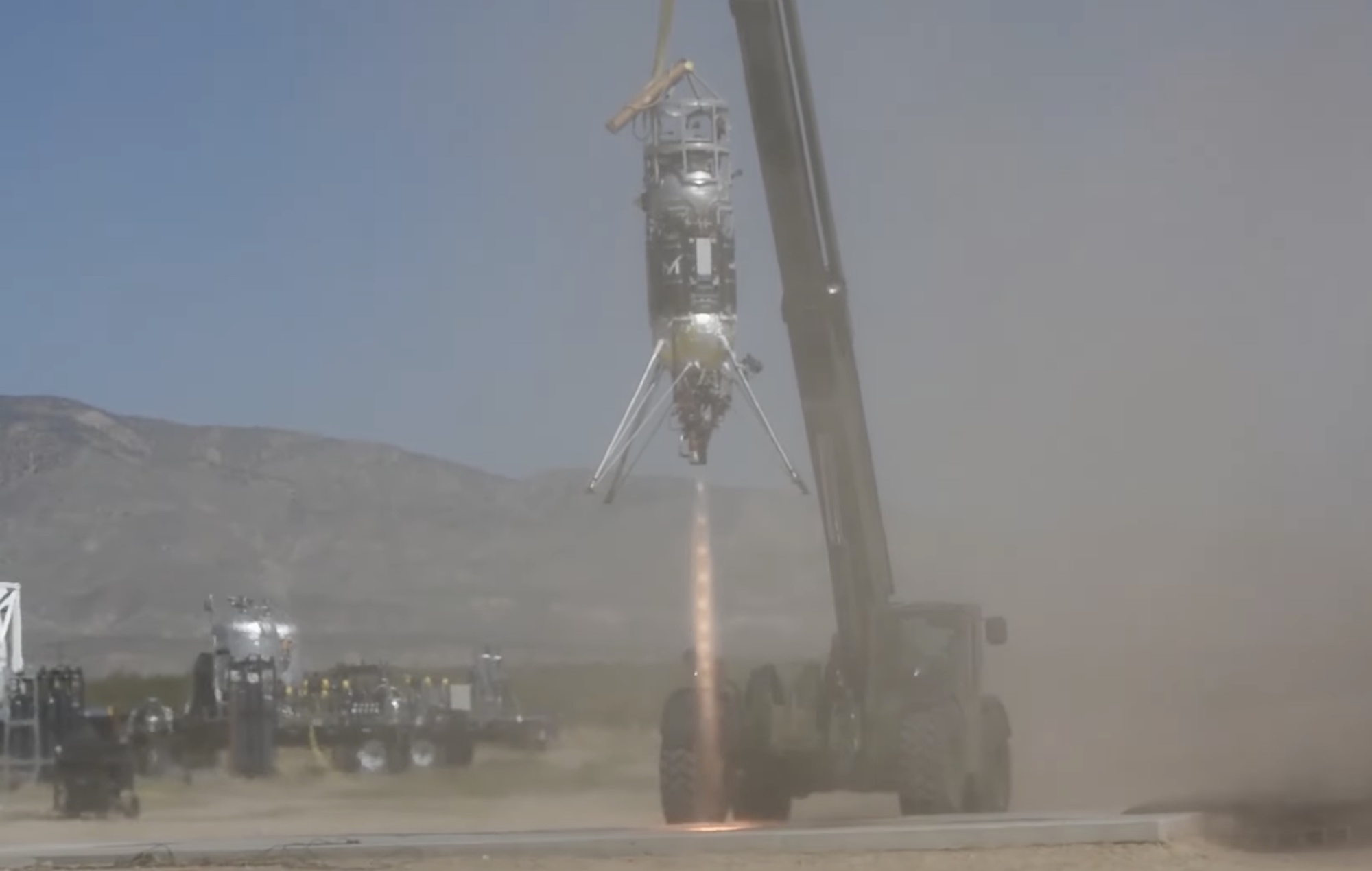WASHINGTON — A year after acquiring the assets of Masten Space Systems, Astrobotic has resumed flights of that company’s suborbital vehicle and plans to continue development of a larger rocket.
Astrobotic announced Oct. 10 that it completed the first campaign of test flights by Xodiac, a vertical-takeoff, vertical-landing vehicle, since acquiring it and other Masten Space Systems assets last year. Xodiac conducted four flights from Mojave, California, hovering just off the ground to test plume-surface interactions ahead of future lunar landing missions, supporting research by the University of Central Florida.
Xodiac was built several years ago by Masten Space Systems, based in Mojave, and made more than 150 low-altitude flights for a variety of technology demonstration investigations. However, the company filed for bankruptcy in July 2022 and its assets acquired by Astrobotic that September for $4.5 million.
Xodiac is now part of Astobotic’s Propulsion and Test Department, which includes other assets from Masten Space Systems as well as many of its former employees, who say they have picked up where they left off before the bankruptcy.
“We’re pretty much back to doing Xodiac maintenance, flying it, maintaining it, flying it again,” said Dave Masten, founder of Masten Space Systems and now chief engineer of Astobotic’s Propulsion and Test Department, in a recent interview.
The flights involved a mix of former Masten Space Systems employees and new ones. “We went through a very intensive training campaign to get people very comfortable and familiar with the vehicle, and it really paid off,” said Jenna Edwards, director of propulsion and test at Astrobotic. “It was really exciting to see this team grow up and really take ownership of the vehicle.”
There remains strong interest from various customers, including NASA, in Xodiac. The next campaign of Xodiac flights will be for NASA’s TechLeap Prize, flying payloads designed to detect hazards from an altitude of 250 meters to support landings in the dark.
Astrobotic’s manifest of Xodiac customers includes Draper, San Diego State University and Astrobotic itself, using Xodiac to test a hazard avoidance system it has developed for its Griffin lunar lander that will deliver NASA’s VIPER rover.
Sean Bedford, director of business development at Astrobotic, said the company has about 20 flights of Xodiac scheduled through the rest of the calendar year. “We’re booked up into the third quarter of next year with pretty much monthly, if not more frequent, campaigns,” he said. “It’s a testament to the uniqueness of this platform and what it can provide, as well as the value of this sort of relevant flight testing for emerging technologies.”
As it resumes flights of Xodiac, it is also continuing work on a larger suborbital vehicle called Xogdor, development of which had started at Masten Space Systems. Work on Xogdor is supported by a NASA space technology “Tipping Point” award in 2020. Bedford said the company is getting close to beginning hot-fire testing of the methane/liquid oxygen engine that will power the vehicle, with a goal of a first launch in early 2025.
Xogdor will be able to fly at higher speeds and go beyond the 100-kilometer Kármán line frequently used as the boundary of space. The vehicle will also accommodate larger payloads and could be used for point-to-point suborbital flights, such as from Mojave to Spaceport America in New Mexico.
“We think there’s a lot of a lot of potential use cases and users within NASA, DOD and commercial industry,” said Bedford. That includes potential military interest in Xogdor for “rocket cargo” delivery and as a liquid-fuel target for missile defense testing. “We really do think that this can revolutionize suborbital flight testing and suborbital rocketry.”
Dave Masten noted that Xogdor could be used to also fly reduced gravity flights, offering extended time at Martian or lunar gravity levels. “Ten minutes of one-sixth or one-quarter gravity might be quite useful to a lot of people.”
The integration of the former Masten Space Systems into Astrobotic has been going well, they said. While the two companies once competed against each other for NASA awards, particularly in the Commercial Lunar Payload Services program, Astrobotic had previously been a customer of Masten Space Systems, testing its terrain relative navigation technologies on a Masten vehicle.
“What’s been interesting to me is to see the way the portfolio of IP and capabilities that Masten brought overlapped with or had some sort of compatibility” with Astrobotic’s work in lunar landers and other technologies, Edwards said. “It’s a good way to pull together other departments into a much larger portfolio of work.”
“It’s been really good,” Dave Masten said of the integration of his former company into Astrobotic. “It’s been a really positive working experience, and we’re really glad to have that support.”
